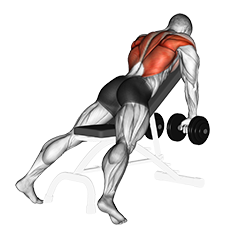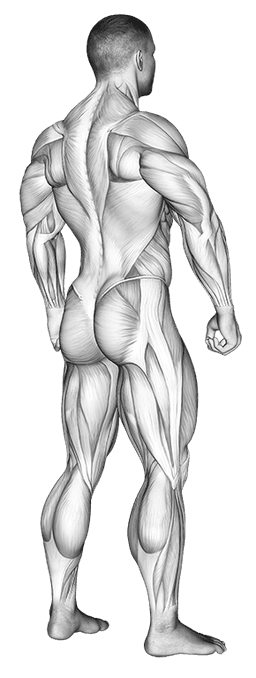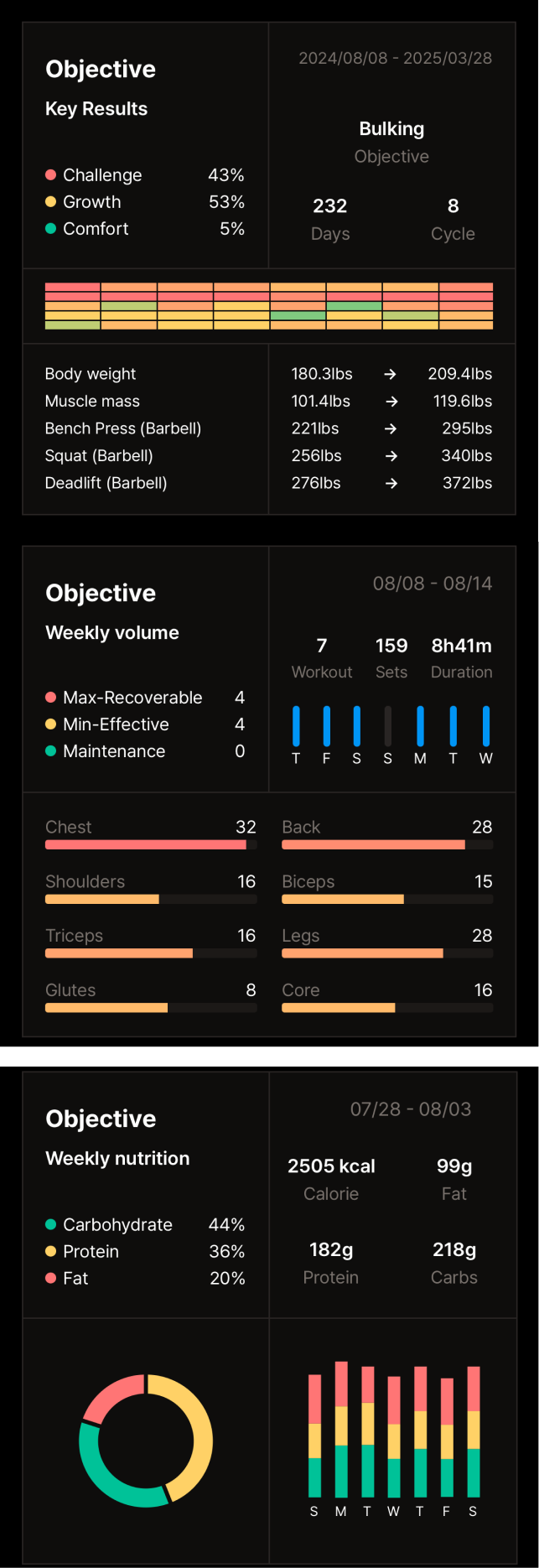
Incline Row (Dumbbell)
A strength training exercise that targets the upper back muscles, particularly the lats and rhomboids, while also engaging the biceps and forearms.
Muscle Targets Visualizer
Muscle Targeting Visualizer






Primary Muscle
Secondary Muscles
Strength Level Tracker
Track Your Progress Like a Pro
Incline Row (Dumbbell)
Average of all records in a cycle
Step-by-Step Instructions
1. Setup
Adjust the incline bench to a comfortable angle (usually 30-45 degrees). Lie face down on the bench with your feet flat on the floor and knees slightly bent. Hold a dumbbell in each hand, letting your arms hang straight down towards the floor.
- Choose a weight that allows you to maintain good form for the prescribed number of repetitions.
- Ensure your feet are firmly planted and provide a stable base.
- Maintain a neutral spine, avoiding any excessive arching or rounding.
2. Rowing Motion
Keeping your back straight and core engaged, pull the dumbbells towards your chest, squeezing your shoulder blades together at the top of the movement. Maintain a controlled pace.
- Focus on retracting your shoulder blades as you pull the weight to maximize back muscle activation.
- Keep your elbows tucked close to your body, avoiding wide or flared out movements.
- Avoid using momentum to swing the weights upward.
3. Lowering
Slowly lower the dumbbells back to the starting position, maintaining control throughout the eccentric phase.
- Avoid dropping the dumbbells; control the descent to fully engage the muscles.
- Maintain tension in your back muscles during the entire lowering phase.
- Take a brief pause at the bottom before initiating the next repetition.
4. Repetition
Continue performing repetitions, maintaining proper form and controlled movements throughout.
- Maintain a consistent rhythm and pace.
- Focus on feeling the muscles work; this is more important than the number of reps.
- Take breaks as needed to avoid fatigue compromising form.
5. Breathing
Exhale during the concentric phase (pulling the weight), and inhale during the eccentric phase (lowering the weight).
- Controlled breathing helps maintain stability and form.
- Focus on coordinating your breath with the movement.
- Avoid holding your breath.
Form Tips
✓Maintain a Straight Back
Avoid rounding your back; keep your spine neutral to protect your lower back.
✓Controlled Movement
Perform the exercise with a controlled, deliberate motion, avoiding jerky movements.
✓Full Range of Motion
Extend your arms completely at the bottom and fully squeeze your shoulder blades at the top.
✓Engage Your Core
Keep your core engaged throughout the exercise for stability and to support your spine.
Common Mistakes
Using momentum to lift the weight
Focus on controlled movement and using your back muscles to pull the weight.
Rounding the back
Engage your core and maintain a straight back throughout the lift.
Not fully extending arms at the bottom
Ensure a full range of motion by fully extending your arms at the bottom of the movement.
Using too much weight
Reduce weight to a level that allows for maintaining proper form.
Arching the back excessively
Maintain a neutral spine; avoid excessive arching by engaging your core muscles.
Alternative Exercises
- One-arm Incline Dumbbell Row
- Incline Barbell Row
Complementary Exercises
- Incline Dumbbell Press
- Lat Pulldowns
- Face Pulls

